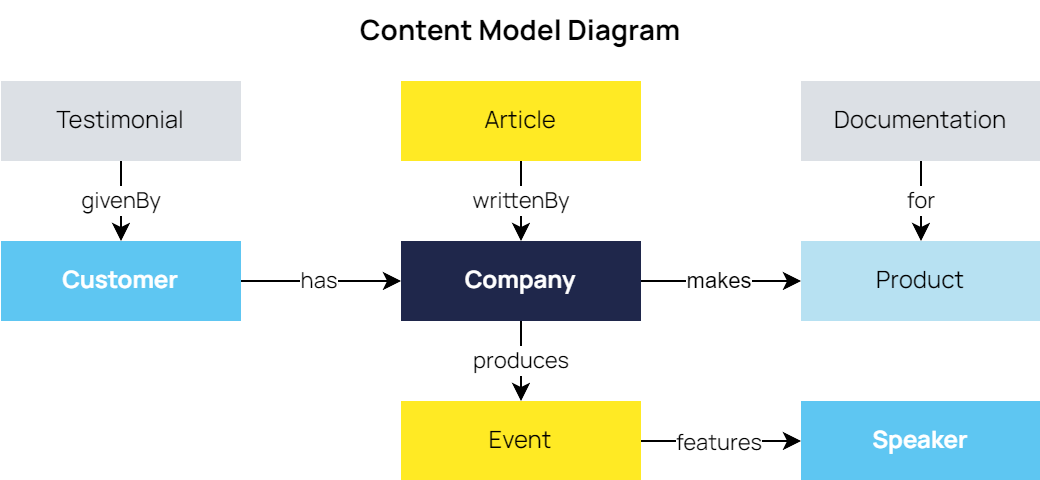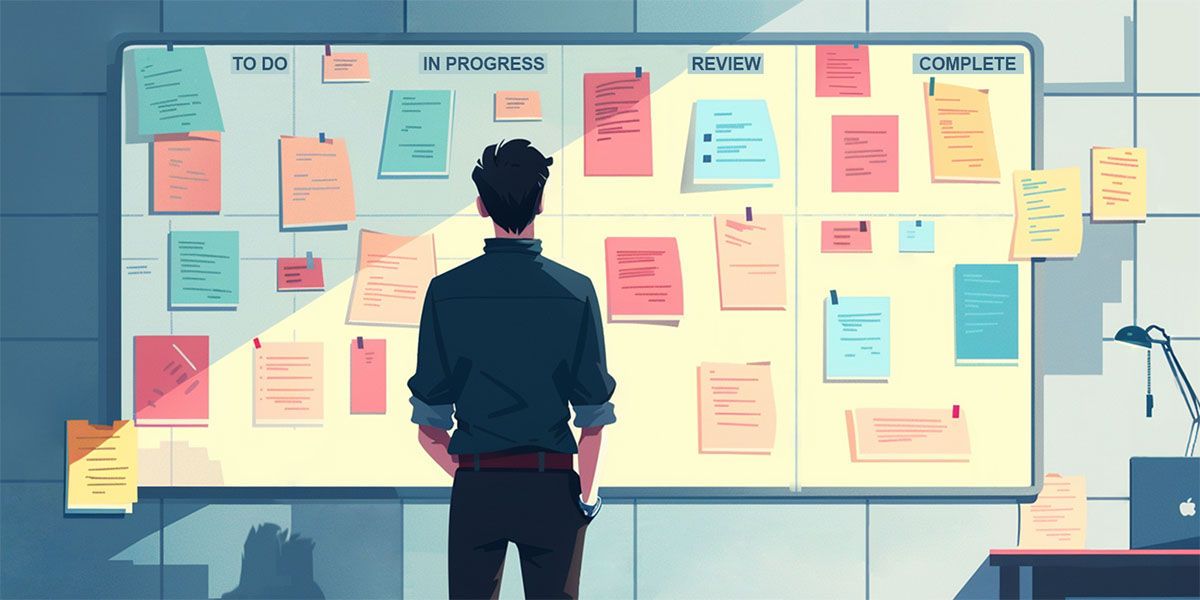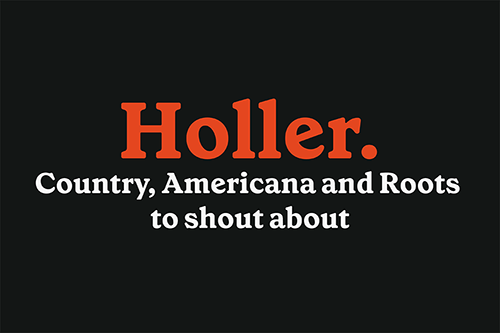As a citizen of the internet age, it’s more than likely that you have at least a passing familiarity with concept of a Content Management System or CMS. If you’ve even dabbled with making websites, you’ve probably used something like WordPress or Joomla along the way. Even so, you’d be forgiven for thinking that most CMS are more-or-less the same, and that the choice of which system is a decision best left to the experts.
As luck would have it, it’s a bit more complicated than that! In fact, one of the existing issues with traditional systems is that business and technical concerns often overlap, and that technical choices and commitments can have unforeseen consequences on content management and — ultimately — the successful achievement of business objectives. Consequently, a movement has arisen that seeks to create a cleaner separation between the management system and the content itself in the form of so-called headless content management system, and Sanity is a committed member of that wave.

What is Sanity CMS?
Put simply, Sanity CMS is a headless content management system known for its customisable schemas, real-time collaboration features, and robust APIs, enabling developers and businesses to efficiently create, manage, and deliver structured content across multiple channels.
At this point I could easily start boring you with all the great features that Sanity has. Indeed, it has plenty of user-friendly advantages and lots of techie stuff to please the developers, but the distinctive business benefits of Sanity lie elsewhere in the headless aspect of the description.
What is a headless CMS and why does it matter?
To quote Knut Melvær, Head of Developer Community and Education at Sanity.io:
"A headless CMS is a content management system that separates where content is stored (the “body”) from where it is presented (the “head“). It separates information and presentation. This enables content reuse and remixing across web, mobile, and digital media platforms as needed."

As we can see, a headless CMS is a content management system that decouples the content management and delivery layers, allowing for greater flexibility and scalability in content distribution across various digital channels.
Traditional CMS platforms typically combine content creation, storage, and presentation layers into a single monolithic system. In contrast, a headless CMS focuses solely on content management, providing a data interface (API) through which content can be retrieved and displayed on any device or platform.
Business benefits of headless CMS: Why you should keep your content separate.

All this is probably very interesting from a website development perspective, but why should a business care about keeping their content separate? In practice, there are several reasons that you could be at least mildly excited by a headless CMS:
- Flexibility: A headless CMS allows businesses to deliver content across multiple channels and devices, adapting to changing consumer preferences and technological advancements without being tied to a specific presentation layer.
- Faster time-to-market: Decoupling content management and presentation layers streamlines the content creation and publishing process, resulting in quicker time-to-market for new content and updates, further boosting competitiveness in fast-paced industries.
- Improved user experience: Headless systems enable personalised and consistent content experiences across channels, optimizing content for each platform and enhancing engagement and relevance for users.
- Scalability: Platforms such as Sanity are also inherently scalable, handling large volumes of content and traffic without compromising performance, making them suitable for faster-growing businesses.
- Futureproofing: Finally, by separating content from presentation and technology dependencies, a headless CMS ensures adaptability to future technological advancements and changes in consumer behaviour, avoiding major platform migrations or disruptions.
The last of the benefits leads us to a very important point: that the separation of content from the delivery system enables and facilitates what is known as content modelling.

Content modelling: Why?
Content modelling is the process of structuring and organizing content within a content management system (CMS) in a way that reflects the organization's goals, audience needs, and desired content presentation. It involves defining the types of content, their attributes, relationships, and how they interact within the CMS.
- Consistency
- Reusability
- Scalability
- Personalisation
- SEO and Accessibility
This process is crucial for modern businesses because it ensures consistency, reusability, scalability, and personalization of content across various digital channels. By creating a well-defined content model, businesses can streamline content creation and management processes, improve collaboration among team members, enhance user experience, and adapt to changing content requirements and technological advancements more effectively.
- Streamlined content creation.
- Improved collaboration.
- Enhanced user experience.
- Adaptation to changing requirements.
Ultimately, content modelling enables businesses to deliver engaging and relevant content experiences to their audience, driving customer engagement, loyalty, and business success. As stated above, using a headless CMS such as Sanity that separates content from delivery system makes it much easier to implement such a plan.
- How to Create a Content Model
: A guide to creating a content model, detailing the process and best practices for structuring and organizing website or application content effectively.
Sanity in action
In practice, Sanity and headless CMS architecture have a wide range of useful applications. For instance, a fashion retailer aiming for a seamless shopping experience across their website, mobile app, and social media can utilize Sanity CMS to create structured content models for products, categories, and promotions, ensuring consistency and scalability. Similarly, a travel agency requiring a multilingual website for international customers might leverage Sanity CMS to support multiple languages and customize content for each market.
Holler Country: Better customer engagement for music fans.

Drawing from our own experiences, the online magazine that PCG developed for Spike Diamond (Holler Country) utilised Sanity CMS alongside Amazon Pinpoint to significantly enhance customer engagement.
By integrating a headless system, they were able to efficiently manage and distribute personalized content across email and push notifications, an approach that allows for seamless content updates directly within the CMS, linking existing content without redundancy, and maintaining consistent design.
PCG.io: Seamless collaboration on multilingual content for distributed teams

While it might sound a bit like we’re blowing our own trumpet, we think that it’s a sign of our sincere belief in Sanity as the go-to CMS that it forms the core of own website and internal production systems.
Indeed, it’s fair to say that implementing Sanity CMS as our content management system has radically improved our website management process. With its headless architecture, we customised a structured content entry system perfectly suited for our multi-language, geographically dispersed team. This approach enables publication of diverse content types across four languages. By decoupling the content management and presentation layers, we've achieved greater flexibility, scalability, and efficiency in delivering content to our global audience.
Furthermore, Sanity's intuitive interface and powerful features empower our team to collaborate effectively, streamline workflows, and maintain consistency across our digital presence, ultimately enhancing the overall user experience.
Embracing strategic advantage
As we saw above, transitioning from traditional Content Management Systems (CMS) to headless solutions like Sanity CMS offers businesses a strategic edge. By embracing this shift, companies unlock a world of possibilities, from streamlined content management to enhanced user experiences and future-proofing against technological advancements. Content modelling also emerges as a key component, empowering businesses to strategically structure and organize content for maximum impact.
Further Reading
- Headless CMS Explained
- Content Modeling: What It Is and How to Get Started
- How to Create a Content Model
Revolutionize your content management
Ready to unlock the full potential of your business with a modern headless CMS and content modelled for success? Our team of experts is here to help. Whether you're looking to streamline operations, enhance user experiences, or future-proof your business against technological advancements, we've got you covered. Start your journey towards more effective content today!

